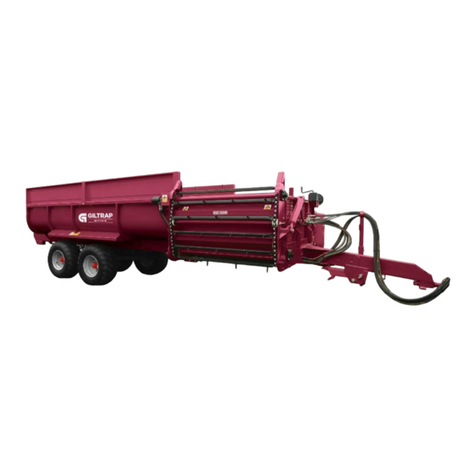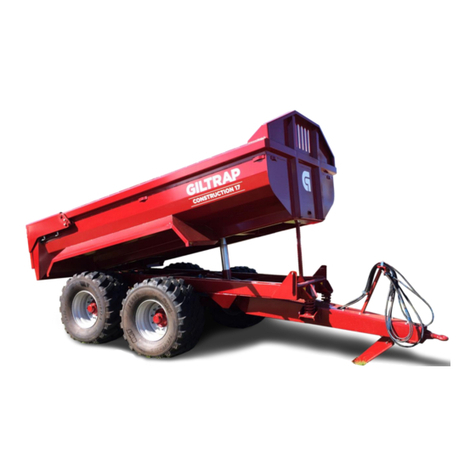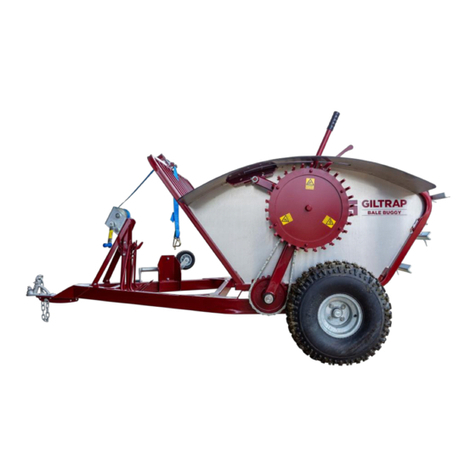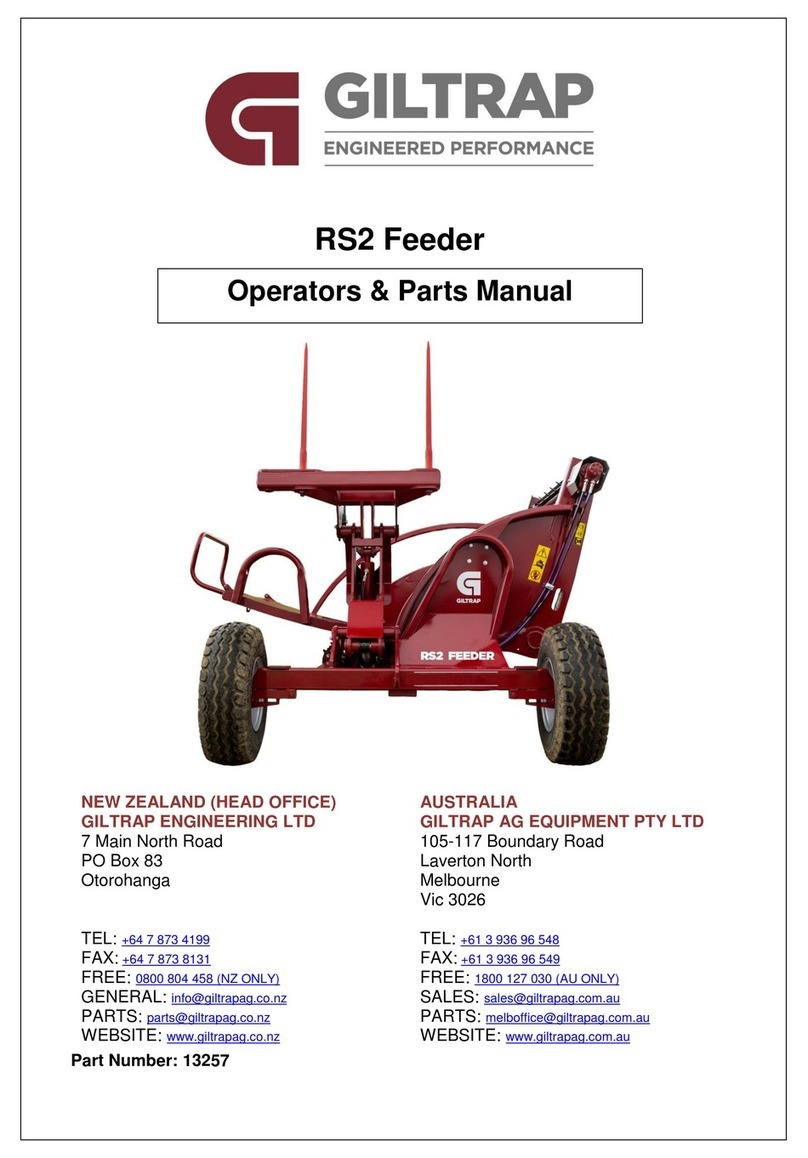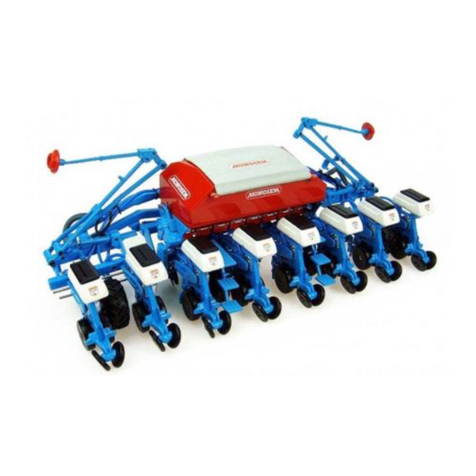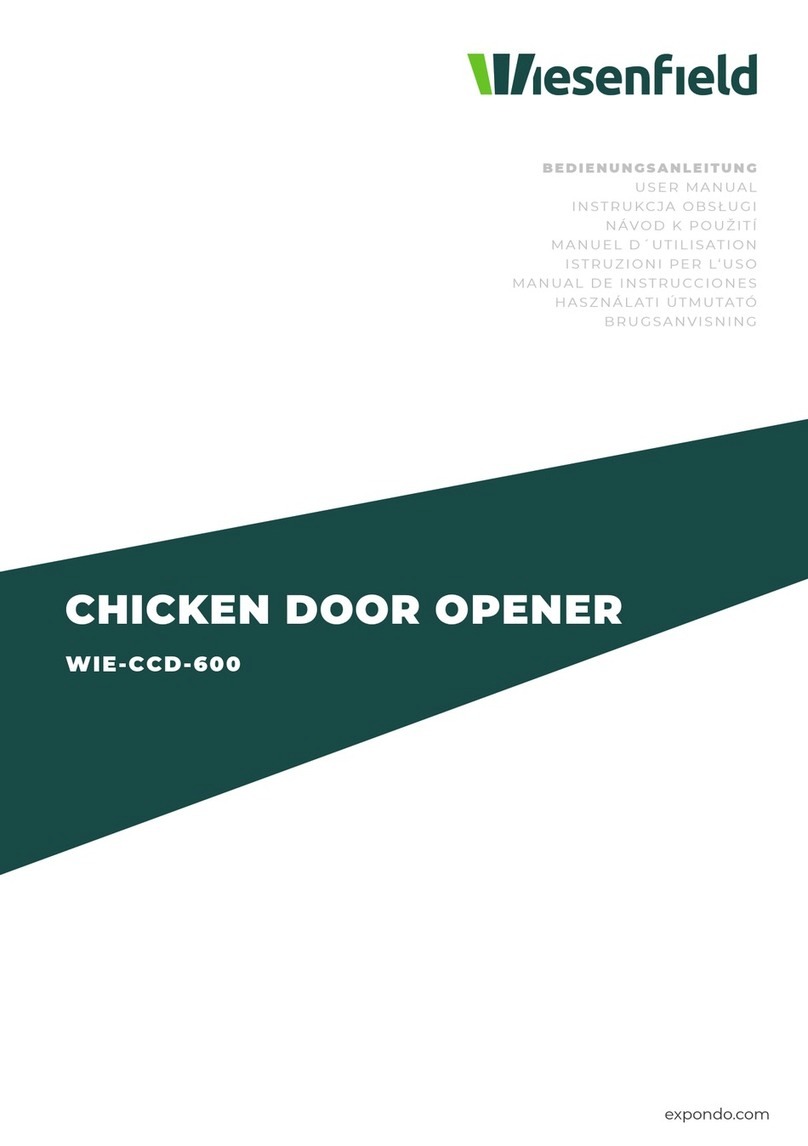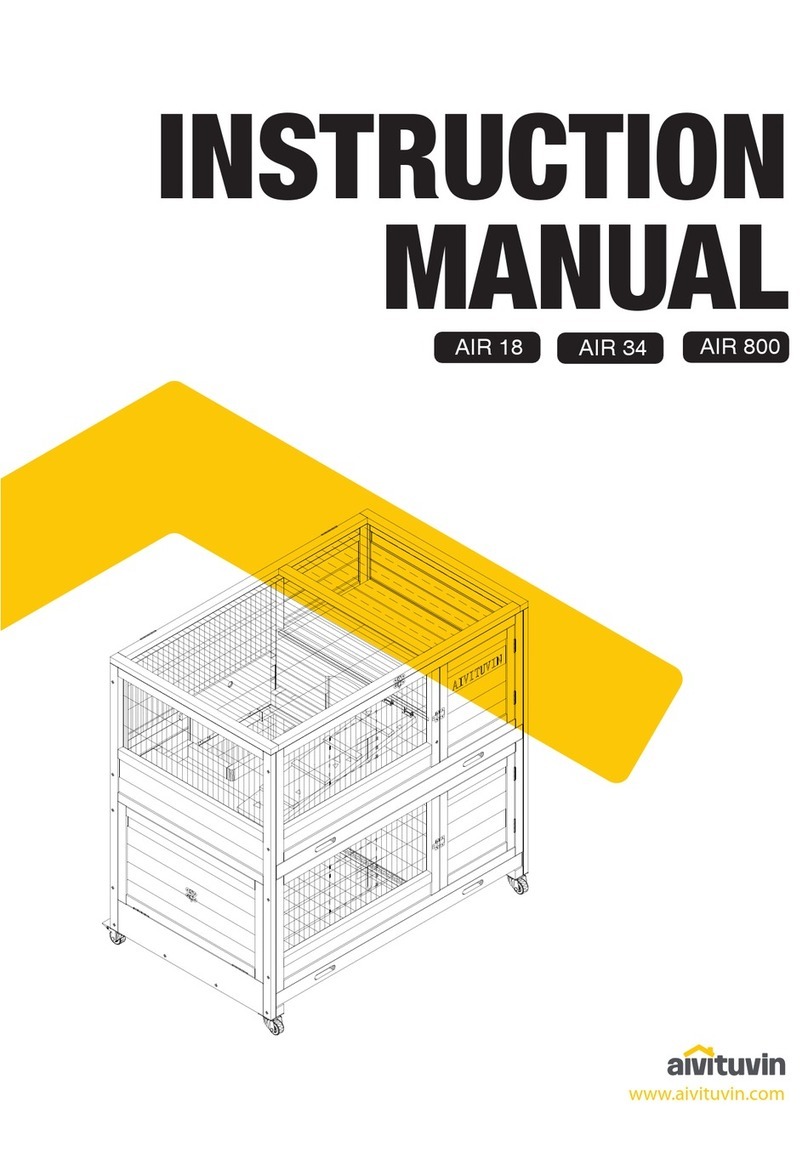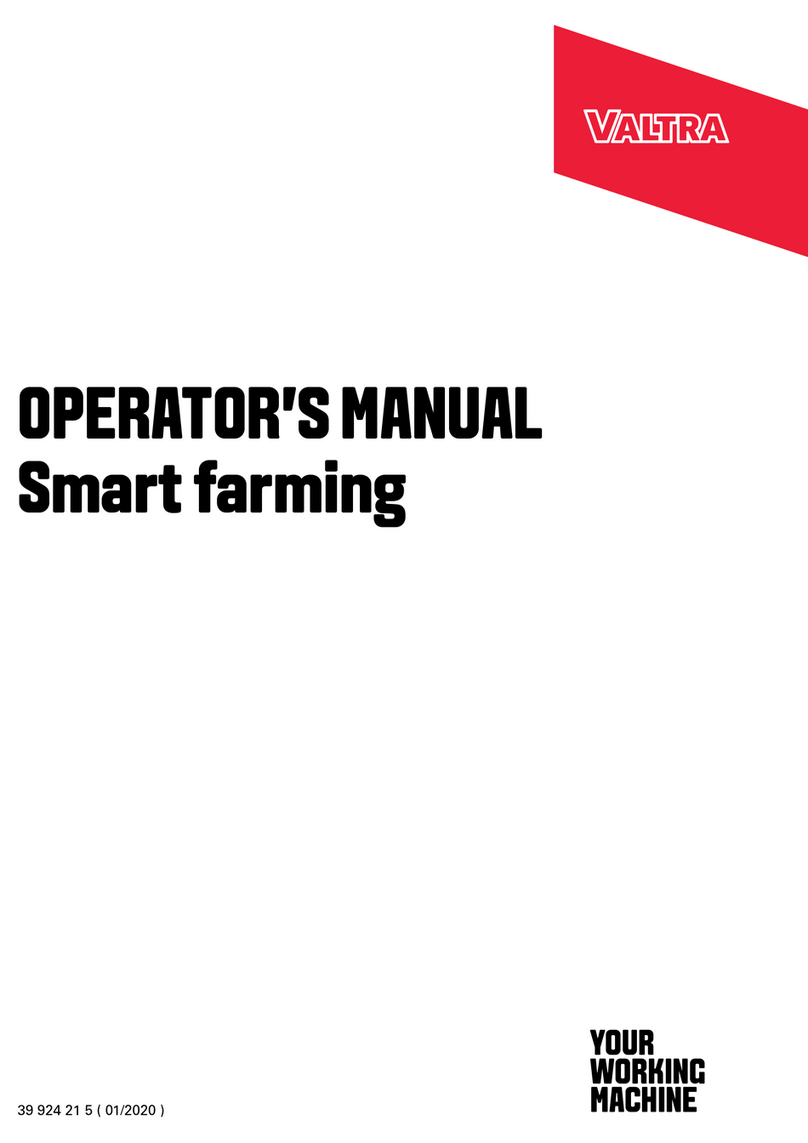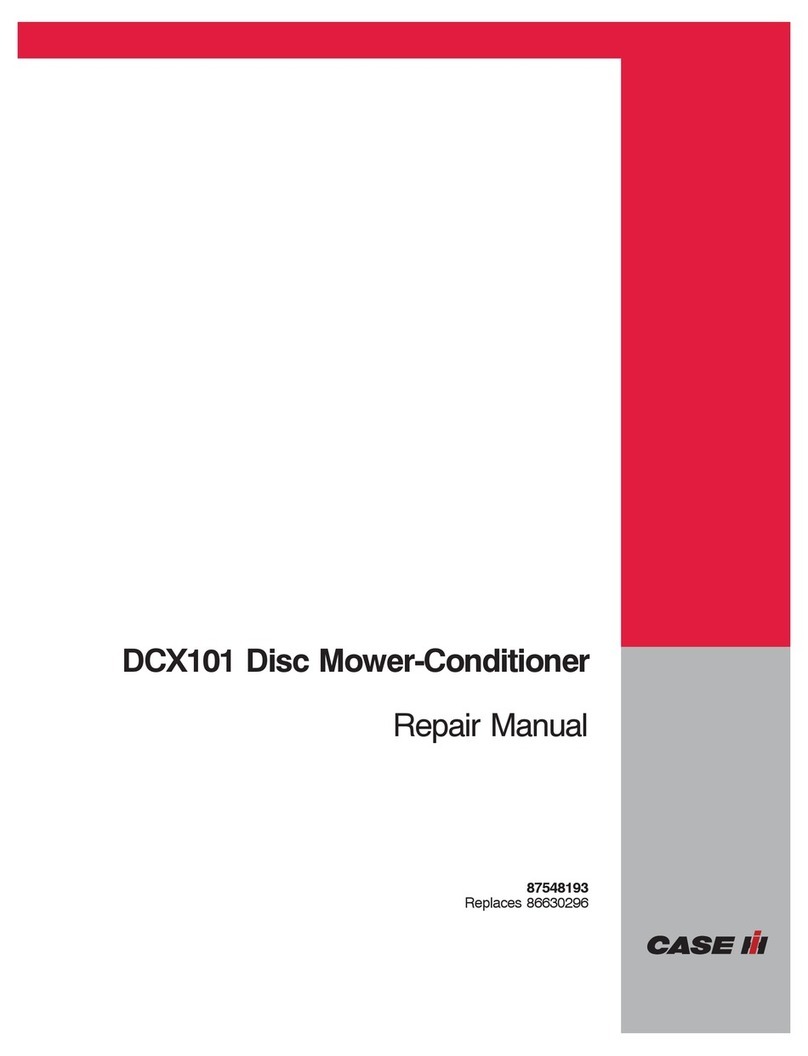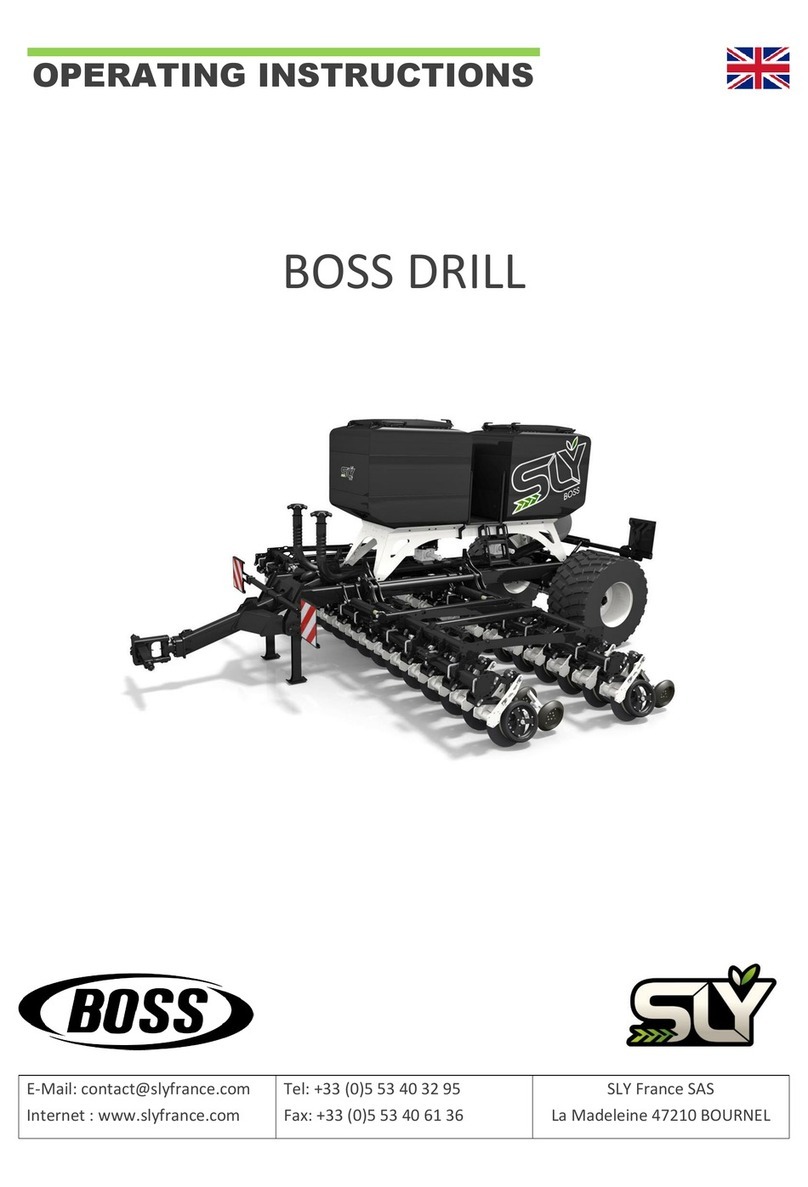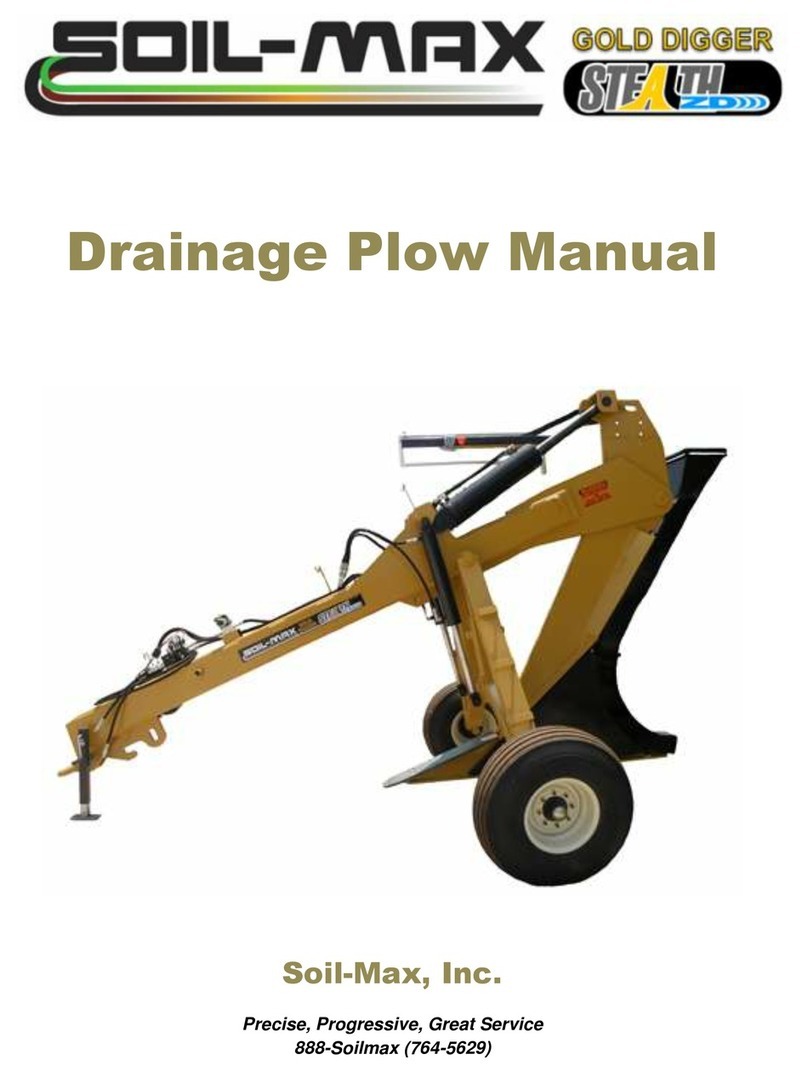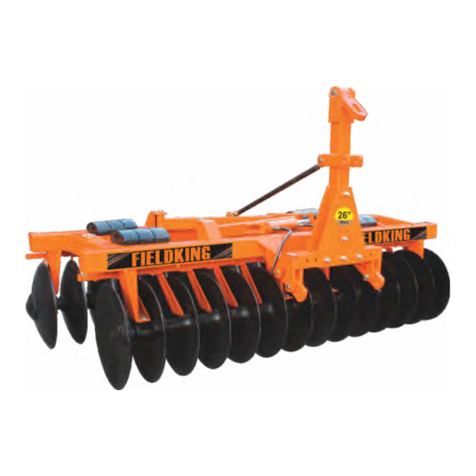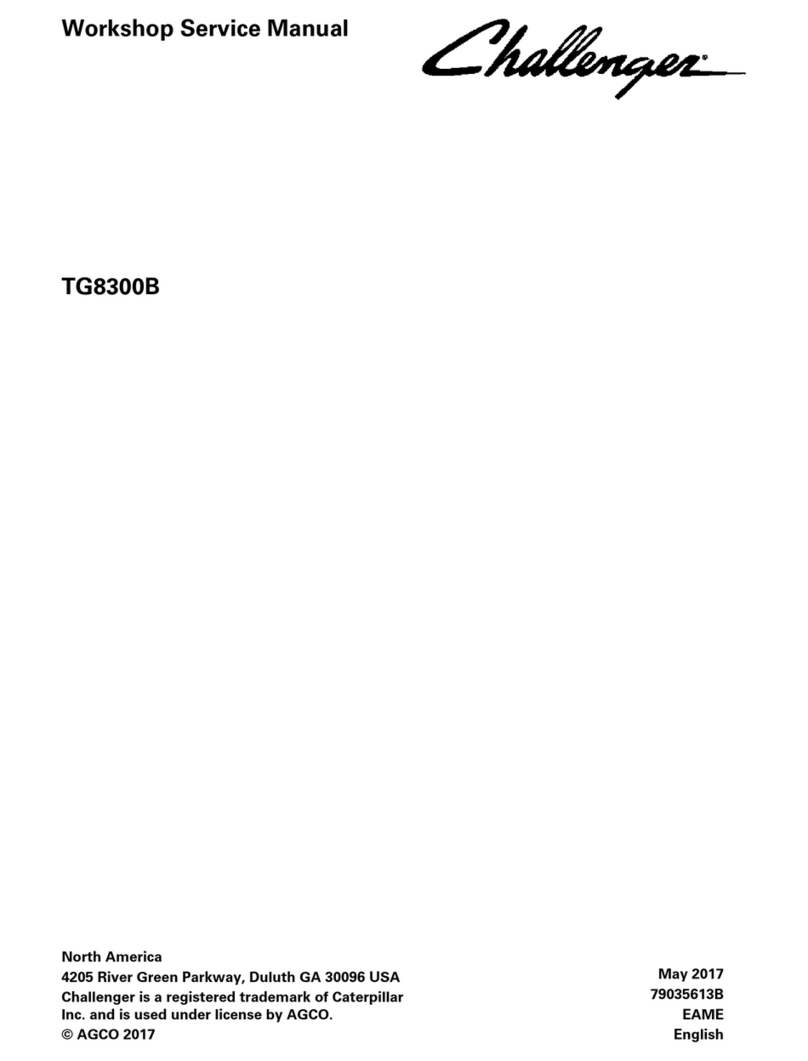Giltrap G2 User manual

G2 & G2X2
Part Number: 595-0045
Giltrap Engineering Ltd
P.O. Box 83, 7 Main North Rd
Otorohanga, 3900, New Zealand
Phone: +64 7 873 4199
Fax: +64 7 873 8131
Website: www.giltrapag.co.nz
Parts & Operator’s
Manual

G2 & G2X2 –Operator’s Manual & Parts Book
Page 2
Disclaimer
Although every endeavour has been made to compile as near to complete records as
possible for the machine described, it is possible some information is incomplete or
missing.
Giltrap Engineering request that you treat this book as a guide only, and offer any
assistance necessary to procure the information or part you may require.
For parts or service enquiries, please contact the applicable numbers on the previous
page.
Produced Jan 2015
Copyright 2015 by Giltrap Engineering Ltd.
Printed in New Zealand
All rights reserved. Reproduction or use, without express permission, of editorial or pictorial content, in any manner, is prohibited.

G2 & G2X2 –Operator’s Manual & Parts Book
Page 3
Table of Contents
INTRODUCTION ...................................................................................................................................................... 4
DELIVERY ................................................................................................................................................................. 4
WARRANTY .............................................................................................................................................................. 5
CLAIMS ...................................................................................................................................................................... 6
SAFETY - GENERAL................................................................................................................................................ 7
SAFETY –MACHINE SPECIFIC ......................................................................................................................... 10
SETUP & OPERATING INSTRUCTIONS –3 PT LINKAGE MODEL........................................................... 11
Hydraulic Requirements ..................................................................................................................................... 11
Setup ................................................................................................................................................................... 11
Loading Instructions........................................................................................................................................... 11
Feeding Out ........................................................................................................................................................ 11
SETUP & OPERATING INSTRUCTIONS –TRAILED MODEL..................................................................... 12
Hydraulic Requirements ..................................................................................................................................... 12
Setup ................................................................................................................................................................... 12
Loading Instructions........................................................................................................................................... 12
Feeding Out ........................................................................................................................................................ 12
Settings for different sized bales ......................................................................................................................... 13
Lubrication –3 point linkage model................................................................................................................... 14
Lubrication –Trailed model............................................................................................................................... 15
Lubrication –Trailed Model Cont...................................................................................................................... 16
Feed Chain Adjustment....................................................................................................................................... 16
Chain Tension..................................................................................................................................................... 17
Before Storing..................................................................................................................................................... 17
PARTS SECTION .................................................................................................................................................... 18
TRANSFERS –3 POINT LINKAGE MODEL ..................................................................................................... 18
TRANSFERS –TRAILED MODEL....................................................................................................................... 20
FORK ASSEMBLY.................................................................................................................................................. 21
CRADLE ASSEMBLY............................................................................................................................................. 22
FEED CHAINS......................................................................................................................................................... 23
TRAILED CRADLE ASSEMBLY.......................................................................................................................... 24
50MM 6 STUD HUB MONROC............................................................................................................................. 26
50MM 6 STUD HUB ADR....................................................................................................................................... 28
BOOM ASSEMBLY................................................................................................................................................. 30
FORK ASSEMBLY.................................................................................................................................................. 32
CONTROL VALVE ASSEMBLY –SHL18284..................................................................................................... 33
CONTROL VALVE ASSEMBLY –SHL16371..................................................................................................... 34

G2 & G2X2 –Operator’s Manual & Parts Book
Page 4
Introduction
Thank you for purchasing a Giltrap product. Giltrap Engineering Ltd has enjoyed a long-standing success
with their machinery. We would like you to enjoy the benefits of owning a Giltrap too. By following the
guidelines laid out in this book, you will ensure trouble free, low maintenance operating for years.
Giltrap Engineering Ltd is a progressive company that continually strives to satisfy your needs, so we
welcome any feedback which you can provide to help us improve our products and services and to
ensure that they perform to your expectations. Any constructive comments about this operator’s
manual are also welcome.
Your machine has been designed to perform its task efficiently and with a minimum of maintenance.
This handbook provides safety guidelines, instructions, maintenance requirements and parts listings.
We recommend that you read the entire handbook, before operating the machine as this will enable
you to take full advantage of your new machine’s considerable potential.
Delivery
Before you begin to use your machine, please check it to make sure there is no delivery damage. If
damage is evident, contact the dealer who supplied the machine so that they can make the appropriate
claims.
If you have any other queries, please contact your dealer or Giltrap Engineering Ltd (0800 80 GILTRAP).
All Giltrap products are covered by a 36 month warranty (see next page) on parts and labour, subject to
normal use.
Please fill in the details below for future reference.
Model:
Serial No:
Delivery Date:
Dealer:

G2 & G2X2 –Operator’s Manual & Parts Book
Page 5
Warranty
Subject as hereunder provided, Giltrap Engineering Limited (Hereafter called the Seller) undertake to
correct either by repair, or at their election, by replacement, any defect of material or workmanship
which occurs in any of its goods within twenty four months after delivery of such goods to a first user,
with the exception of contractors or commercial users when the warranty period is limited to six
months.
In addition to the primary 24 month warranty, the Seller undertake to correct either by repair, or at
their election, by replacement, any defect of material or workmanship which occurs in any structural
assembly in any of its goods within thirty six months after delivery of such goods to a first user, with the
exception of contractors or commercial users when the warranty period is limited to six months.
The term goods when used in this document means the article or articles described in invoice as sold by
the Seller but does not include equipment or proprietary parts or accessories not manufactured by the
Seller. The Seller, however, undertakes to pass on so far as they legally can to the first user the benefit
of any warranty given to the Seller by the suppliers of such equipment, parts or accessories.
This understanding shall not apply to:
Any goods which have been sold by the first user.
Any goods which have been damaged by unfair wear and tear, neglect or improper use.
Any goods the identification marks of which have been altered or removed.
Any goods, which have not received maintenance as, set out in this book also such basic normal
maintenance such as tightening of bolts, nuts, hose connections and fittings and normal
lubrication with the recommended lubricant.
Any goods which have been altered or repaired other than on instruction or with the written
approval of the Seller or to which any part not manufactured or having written approval by the
Seller has been fixed.
Any second-hand goods or part thereof.
Any allegedly defective part or parts returned to the Seller must be sent freight paid. No claim for repair
or replacement will be entertained unless, upon discovery of the alleged defect written notification is
sent to the Seller, giving at the same time, the name of the Buyer from whom the goods were purchased
and the date of purchase, together with full details of the alleged defect and the circumstances involved,
and also the serial number of the machine.
The Seller shall not be under liability to their Buyers and first and subsequent users of their goods or to
any other person or persons for loss or damages howsoever arising in respect of either personal injuries
or for special or consequential damage of any kind or from any cause whatsoever arising out of, or in
any way connected with or arising from the manufacture, sale, handling, repair, maintenance,
replacement or use of its goods or the failure or malfunction of any of its goods. Representation and/or
warranties made by any person (including Buyers and employees and other representatives of the
Seller) which are inconsistent or conflicting with these conditions are not binding upon the Seller unless
given in writing and signed by a Director of the Seller.

G2 & G2X2 –Operator’s Manual & Parts Book
Page 6
Claims
If you wish to make a claim under warranty:
Immediately stop using the machine.
List details of the machine and damaged item including serial numbers and date of purchase.
Consult with your Giltrap dealer (supplier) and have him forward your claim and the damaged
item to Giltrap Engineering Ltd.
No warranty to be undertaken unless an order number is obtained from the Seller (Giltrap
Engineering Ltd) prior to any work being done.

G2 & G2X2 –Operator’s Manual & Parts Book
Page 7
Safety - General
This section of the manual offers general guidelines for the safe operation of machinery.
It does not replace local safety regulations. These guidelines were current at the time of publication, but
may be superseded by later regulations.
Giltrap Engineering has made every effort to highlight all risks to personnel or property. Owners and
operators have a responsibility to exercise care and safe work practices at all times in the vicinity of the
machine.
Owners are advised to keep up to date on safety issues and to communicate these to all users of the
machine.
Contact the Occupational Safety and Health Service (OSH) for further information about general safety
aspects. If you have safety concerns specifically related to this machine, contact your dealer
immediately.
Operator Safety
Read this manual carefully before operating new equipment. Learn how to use this machine safely. Be
thoroughly familiar with the controls and the proper use of the equipment before using it. Take careful
note of all safety instructions both in this manual and on the machine itself. Failure to comply with
instructions could result in personal injury and/or damage to the machine. Replace missing or damaged
safety signs on the machine and ensure that these remain clearly visible.
It is the owner’s responsibility to ensure that anyone who operates, adjusts, lubricates, maintains,
cleans or uses the machine in any way has had suitable instruction and is familiar with the
information in this manual (particularly with regard to safety aspects).
Operators and other users of the machine should be aware of potential hazards and operating
limitations.
Be Prepared for Emergencies
Keep a first aid kit and fire extinguisher handy. Keep emergency numbers for doctors, ambulance,
hospital and fire department near your telephone.
Appropriate Dress
Wear close fitting clothing and avoid rings or other forms of jewellery which could become caught in the
machinery.
People with long hair must have it securely fixed and confined close to the head.
Refer to local safety standards for protective clothing and recommended safety equipment.
Adequate protection, such as a face mask, should be worn if operating this machine in dry and dusty
conditions.
Transport This Machine Safely
Ensure that all linkage pins and security clips are fitted correctly.
With trailing machines tow with the drawbar only, as this is the only safe towing point on the machine.
Always check that bystanders (especially children) are well clear (front and rear) before starting and
moving the tractor and the machine.

G2 & G2X2 –Operator’s Manual & Parts Book
Page 8
Plan safe routes of travel, and be aware of power lines and other roadside hazards.
Take particular care when towing implements on hillsides.
Do not ride or allow passengers on the machine. This machine is not designed to carry passengers, and
no riders are permitted.
Road transport
On public roads,
A speed of 40km/h must not be exceeded.
Do not operate during the hours of darkness unless standard lights are fitted and clearly visible.
(This also applies when visibility is limited, e.g., in foggy conditions.)
See the guidelines in the Vehicle Dimensions and Mass Rule issued by the Land & Transport Safety
Authority.
Avoid tip-overs
Run the machine along hillsides with the elevator on the high side of the hill. Avoid holes, ditches and
obstructions which may cause the machine to tip over, especially on hillsides. Never drive near the edge
of a gully or steep embankment - it might cave in. Slow down for hillsides, rough ground and sharp
turns.
Handle Agricultural Chemicals Safely
All farm chemicals should be stored, used, handled and disposed of safely and in accordance with the
supplier’s/manufacturer’s recommendations.
Read the product label before using, noting any warnings or special cautions, including any protective
clothing or equipment that may be required, i.e. respirator.
Do not eat or smoke while handling sprays, fertilisers, coated seeds, etc. Afterwards, always wash your
hands and face before you eat, drink, smoke, or use the toilet.
Store sprays, fertilisers, coated seeds, etc. out of reach of children and pets, and away from food and
animal feeds.
Any symptoms of illness during or after using chemicals should be treated according to the
supplier’s/manufacturer’s recommendations. If severe, call a physician or get the patient to hospital
immediately. Keep the container and/or label for reference.
Avoid High Pressure Fluids
Avoid any contact with fluids leaking under pressure, because the fluids can penetrate the skin surface.
Any fluid which penetrates the skin will need to be removed immediately by a medical expert. Seek
specialist advice on this type of injury.
Relieve the pressure before disconnecting any hydraulic or other lines. Make all repairs and tighten all
fittings before re-connection to pressurised fluid.
Keep your hands and body away from any pinholes or high pressure jets. Search for leaks with a piece of
cardboard instead of using your hand directly.

G2 & G2X2 –Operator’s Manual & Parts Book
Page 9
Safe Work Practices
All farm machinery is potentially dangerous and should be treated with caution and respect.
Before starting the machine, ensure that all controls are placed in neutral and that bystanders are well
clear. Check that the guards have been securely fitted and that any adjustments have been made
correctly.
Where possible, disconnect or isolate the drive mechanism to the implement. Lower the machine onto
the ground when not in use.
Do not operate this equipment when severe weather conditions appear imminent.
Practice Safe Maintenance
Keep the machine in safe working condition. Routine maintenance and regular servicing will help reduce
risks and prolong the life of the machine.
General Maintenance
Accidents occur most frequently during servicing and repair. The following general rules must be
followed when maintaining or working with machinery:
All operating and maintenance manuals must be read before and referred to while using or
servicing any piece of equipment.
Turn off all machinery power sources and isolate the machine before making adjustments, doing
lubrication, repairs or any other maintenance on the machine.
Ensure that the machine hydraulics are disconnected from the power source.
Wear gloves when handling components with cutting edges, such as any ground cutting
components.
Beware of hazards created by springs under tension or compression when dismantling or
maintaining the machine.
It is recommended that you clean the machine with a water blaster or similar apparatus before
commencing maintenance.
Make Sure the Machine is Well Supported
When machinery is fitted with hydraulics, do not rely on the hydraulics to support the machine. During
maintenance or while making adjustments under the machine, always lock the hydraulics and support
the machine securely. Place blocks or other stable supports under elevated parts before working on
these.
Electrical Maintenance
Disconnect the electrical supply from the tractor before doing any electrical maintenance.
Welding
With electronic equipment in modern tractors it is advisable to disconnect the machine from the tractor,
or at least disconnect the alternator and battery before attempting any welding.
Use Only Genuine Spare Parts
Unauthorised modifications or non-genuine spare parts may be hazardous and impair the safe operation
and working life of the machine.
Excess lubricants must be disposed of safely so as not to become a hazard.

G2 & G2X2 –Operator’s Manual & Parts Book
Page 10
Safety –Machine Specific
The lists below are not all-inclusive and serve only to highlight the more obvious areas of risk.
The labels attached to the machine are a general reminder that there are hazardous areas on the
machine, rather than specifically highlighting all possible hazards.
The machines have been supplied with the following warning labels. It is the user’s responsibility to keep
them in visible condition. For label locations on the machine, refer Page 19 onwards.
G2
G2X2
Keep Clear
Hazardous areas include:
Sharp headstock tines while feeder is separated
during loading
General area around the machine while it is
operating
Keep off machine while it is moving
High pressure hydraulic hoses
Rotating Chains & Bars
Beware of moving parts
Beware of sharp points
Pinch Points/Moving Parts
Hazardous areas include:
Lifting and lowering of main boom
Unsupported bale dropping
Keep Clear
Hazardous areas include:
Area between machine and tractor
General area around the machine while it is
operating
Keep off machine while it is moving
High pressure hydraulic hoses
Rotating Chains & Bars
Beware of moving parts
Beware of sharp points

G2 & G2X2 –Operator’s Manual & Parts Book
Page 11
Setup & Operating Instructions –3 Pt Linkage Model
Hydraulic Requirements
Most tractors today are fitted with remote hydraulic pressure and return outlets at the rear. If your
tractor is not fitted up as such, contact your local tractor dealer for a conversion kit so that the machine
can be operated in both directions. It is important to use the correct type of quick release coupling ends
to suit your tractor couplings as some brands of couplings have different spring tension within the
coupling which may impede full oil flow - it pays to check this.
IMPORTANT:
Giltrap feeders are fitted with the best type of oil drive motors available, which will give years of trouble
free usage, provided they are used with clean non-contaminated oil. To avoid costly damage to the
motor and also to your tractor pump, ensure the oil used is of the recommended grade and is clean.
It is advisable to drain and flush the hydraulic oil system within the tractor if this has not been done
recently.
Setup
Fit bale forks to your tractor's 3 point system - place feeder on fairly level ground and adjust the top link
so that forks are in parallel to the mounting tubes in the feeder.
Loading Instructions
Lift Bale by cradling it with the prongs. CAUTION: make sure bale is hard up against headstock before
lifting as damage may occur if used to lift loads on ends of prongs.
Load bale into feeder - Insert fork prongs into feeder frame tubes - MAKING SURE THE LOCKING CATCH
IS FULLY LOCKED IN. If the motor drive dog is not fully engaged, rotate motor slowly until it springs into
full engaged position.
Cut and remove all twine before feeding out. This is more easily done by cutting all the twine at the
chain side, and pulling through from the opposite side.
Feeding Out
Operate the tractor hydraulics so the machine is running at approximately 25 litres per minute flow. The
feeder is designed to handle as many types of bales as possible

G2 & G2X2 –Operator’s Manual & Parts Book
Page 12
Setup & Operating Instructions –Trailed Model
Hydraulic Requirements
Most tractors today are fitted with remote hydraulic pressure and return outlets at the rear. If your
tractor is not fitted up as such, contact your local tractor dealer for a conversion kit so that the machine
can be operated in both directions. It is important to use the correct type of quick release coupling ends
to suit your tractor couplings as some brands of couplings have different spring tension within the
coupling which may impede full oil flow - it pays to check this.
IMPORTANT:
Giltrap feeders are fitted with the best type of oil drive motors available which will give years of trouble
free usage, provided they are used with clean non-contaminated oil. To avoid costly damage to the
motor and also to your tractor pump, ensure the oil used is of the recommended grade and is clean.
It is advisable to drain and flush the hydraulic oil system within the tractor if this has not been done
recently.
Setup
Park the feeder on level ground. Adjust the swivel drawbar assembly so the drawbar of the feeder
remains level when hitched to the tractor.
Loading Instructions
Lower the forks fully ensuring the tines are level. Reverse into the bale ensuring both tines are fully
inserted into the bale before lifting as damage may occur if used to lift loads on ends of tines.
Begin lifting the bale onto feeder. Once the large lift ram has reached the end of its stroke, the bale will
begin lowering on the bed. Return the hydraulic lever to neutral when the bale is approx. 500mm away
from the bed. The bale should stop moving allowing the operator to cut and remove any plastic or net
wrap.
After removing the wrap, engage the lever once more to lower the bale to the bed.
Reverse the hydraulic lever to remove the tines from the bale. Note: The fork does not have to be fully
retracted to horizontal at this stage.
Return forks to horizontal position before loading next bale. Hold forks in the lowered position for 3
seconds to fully recharge cylinder.
Feeding Out
Set the tractor hydraulics so the machine is running at 25-30 litres per minute flow. The bale feeder is
capable of feeding out to the left or right, depending on the direction the tractors hydraulic spool valve
is operated.

G2 & G2X2 –Operator’s Manual & Parts Book
Page 13
Settings for different sized bales
In order to set the G2x2 feeder up to load larger diameter round bales (5-6ft) it is necessary to lower the
boom leg, to do this the boom must be in the fully raised position. Pull out the pin and rotate the leg
down and lock it back into place. For loading smaller diameter bales, this leg must be folded back up
.

G2 & G2X2 –Operator’s Manual & Parts Book
Page 14
Maintenance
The Giltrap Bale Feeder is designed for minimal maintenance.
Lubrication –3 point linkage model
The feed chains should be lubricated on a weekly basis to prolong operational lifespan. Giltrap
Engineering recommends the use of food grade chain oil to avoid contamination of livestock feed.
To lubricate the chains the machine should be turned over at slow speed, and oil applied to the chains.
Care must be taken to avoid contact with the machines moving parts.
SHAFT BEARINGS x4
WEEKLY
FORK CATCH
WEEKLY
Oil chains
weekly

G2 & G2X2 –Operator’s Manual & Parts Book
Page 15
Lubrication –Trailed model
The G2x2 is designed so that all grease points on the lift mechanism are accessible from the rear of the
machine.
FORK PIVOT x2
WEEKLY
CROWD RAM x2
WEEKLY
BOOM PIVOT x1
WEEKLY
LIFT RAM x2
WEEKLY

G2 & G2X2 –Operator’s Manual & Parts Book
Page 16
Lubrication –Trailed Model Cont.
The feed chains should be lubricated on a weekly basis to prolong operational lifespan.
Giltrap Engineering recommends the use of food grade chain oil to avoid contamination
of livestock feed.
To lubricate the chains the machine should be turned over at slow speed, and oil
applied through the lubrication holes located above the sprocket mounts. Care must be
taken to avoid contact with the machines moving parts.
Feed Chain Adjustment
Check frequently and clean out any build up of debris between the chain links under
feed bars. Straighten any bent feed bars and teeth.
Feed chains should not require much adjustment; however, if this should become
necessary adjust the chain until the slack has been minimised.
CHAINS x4
WEEKLY
SHAFT BEARINGS x4
WEEKLY
AXLE HUBS x2
YEARLY
JACK & TOE EYE x2
MONTHLY

G2 & G2X2 –Operator’s Manual & Parts Book
Page 17
Chain Tension
3 pt linkage model
Feed chain adjuster (same at both ends)
Loosen adjuster nut and adjust until chain slack has been
minimised.
Trailed model
Feed chain adjuster (same at all four corners)
Remove the bolts from the bearing legs and rotate the bearing
until the chain slack has been minimised.
Before Storing
Clean off any debris etc. and wash machine down, then let machine dry.
Grease all moving parts and bearings.
Oil the fork catch assembly (3 pt linkage model only).
Apply oil liberally to the floor chains, adjust tension if necessary.

G2 & G2X2 –Operator’s Manual & Parts Book
Page 18
Parts Section

G2 & G2X2 –Operator’s Manual & Parts Book
Page 19
Transfers –3 Point Linkage Model
Item
Part Number
Description
Quantity
1
995-1275
G2 Transfer - small
2
2
995-1274
G2 Transfer - large
1

G2 & G2X2 –Operator’s Manual & Parts Book
Page 20
Transfers –Trailed Model
Item
Part Number
Description
Quantity
-
-
GENERATION 2X2 Sticker Kit
1
This manual suits for next models
1
Table of contents
Other Giltrap Farm Equipment manuals
Popular Farm Equipment manuals by other brands
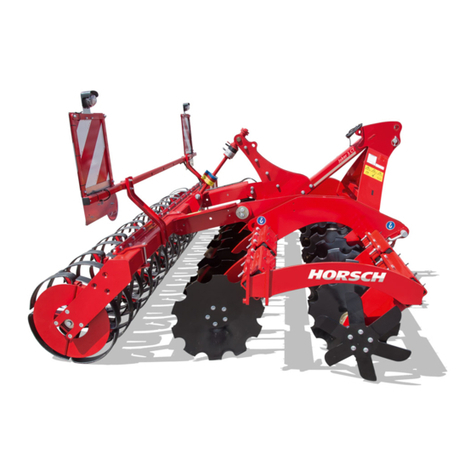
horsch
horsch Joker CT operating instructions
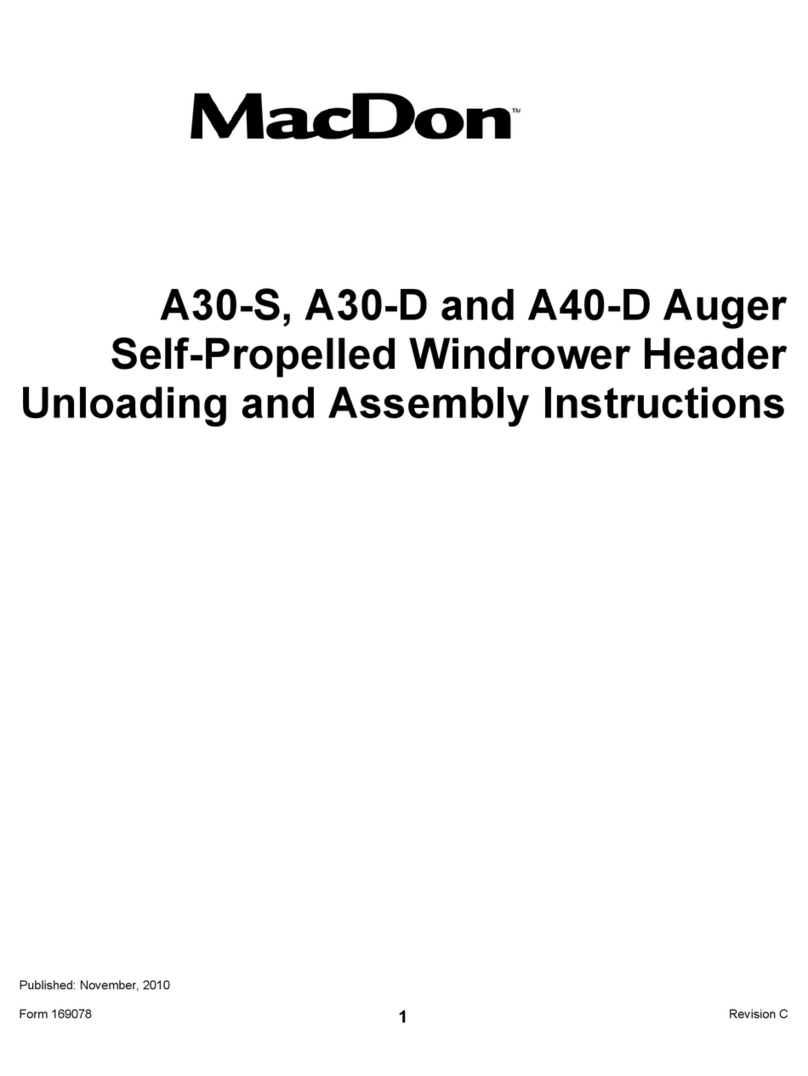
MacDon
MacDon A30-S Assembly instructions

Chore-Time
Chore-Time LIBERTY Feeding System Installation and operator's manual

Patriot equipment
Patriot equipment Corn Reel Installation & operation manual
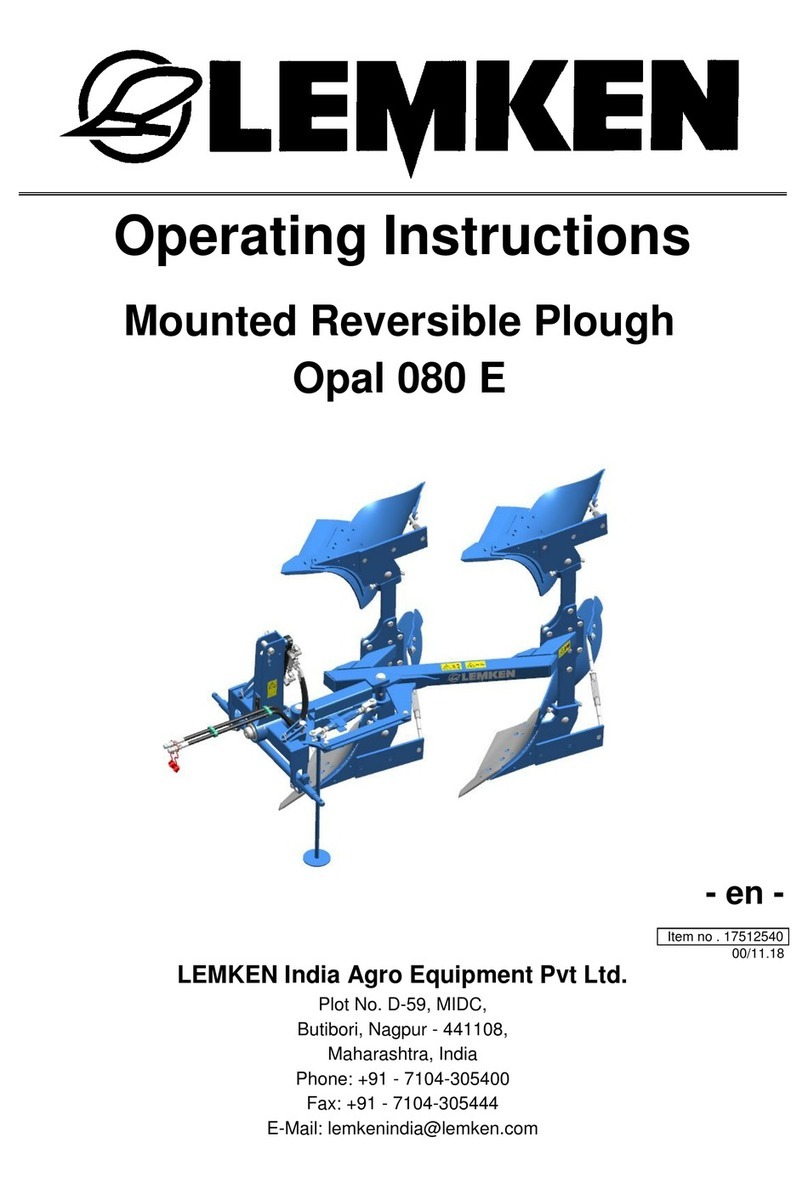
LEMKEN
LEMKEN Opal 080 E operating instructions
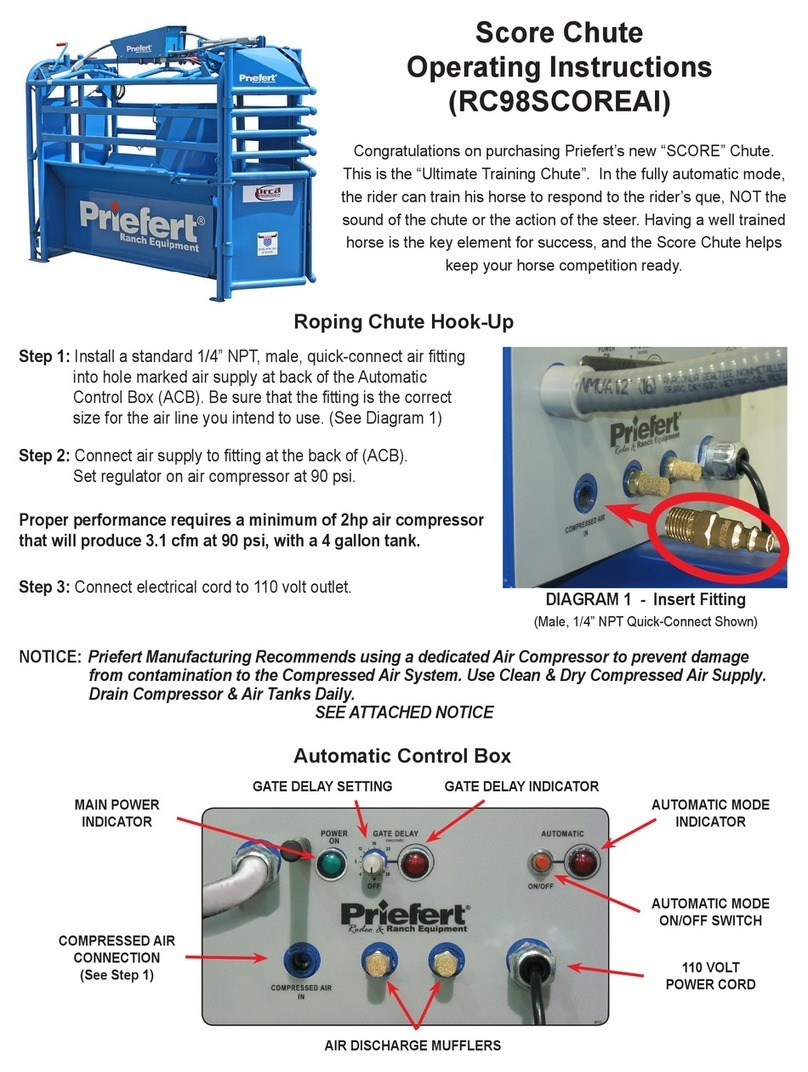
Priefert
Priefert RC98SCOREAI operating instructions
